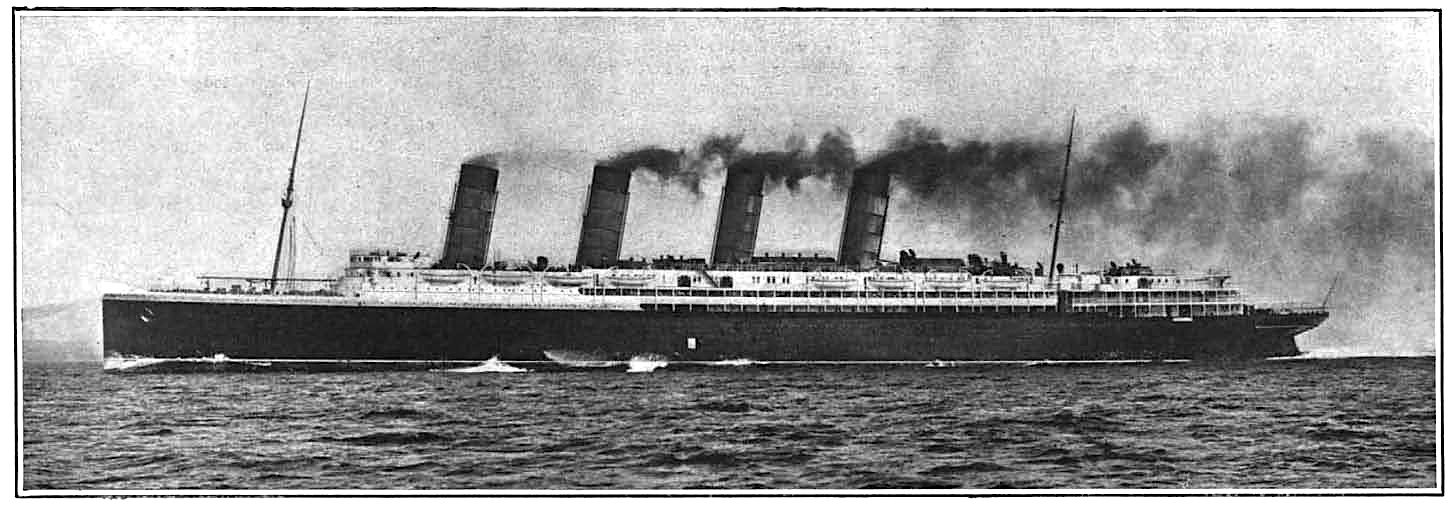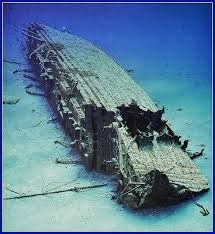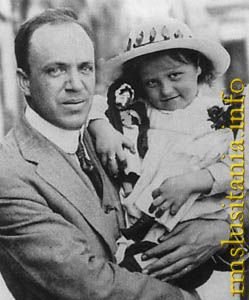Three years and nearly a month later after the Titanic sunk in 1912, the RMS Lusitania was torpedoed and sunk, 7th May 1915, 11 miles off Old Head of Kinsale, Ireland.

RMS Lusitania built by John Brown & Co., Clydebank, Scotland, owned by the Cunard Line, was launched in 1906, christiened by Lady Inverclyde
Her maiden voyage was 7th September 1907. All was fine till the outbreak of the First World War.
August 1914, with the outbreak of the First World War, the Lusitania was requisitioned by the British Admiralty as a armed merchant cruiser and put on the official armed merchant cruiser list. She was painted grey as to attempt mark her identity. The season of 1914-1915 with the lack of number of passengers crossing the Atlantic.
1915 saw new threats at sea, that of the German U-Boats. The Lusitania arrived at Liverpool, on the 6th March. The Admiralty issuing instruction on how to avoid U-Boats. 17th April under the command of Captain William Thomas, the Lusitania left Liverpool on her 201st transatlantic voyage, arriving at the New York on the 24th.
The German Embassy placed warning advert in 50 American newspapers which reads
NOTICE!
TRAVELLERS intending to embark on the Atlantic voyage are reminded that a state of war exists between Germany and her allies and Great Britain and her allies; that the zone of war includes the waters adjacent to the British Isles; that, in accordance with formal notice given by the Imperial German Government, vessels flying the flag of Great Britain, or any of her allies, are liable to destruction in those waters and that travellers sailing in the war zone on the ships of Great Britain or her allies do so at their own risk.
IMPERIAL GERMAN EMBASSY
Washington, D.C., 22 April 1915.
On her last voyage, 202nd, the Lusitania left New York, on board were 1,266 people and 696 crew. BY 7th May on the day of her sinking, she was 11 miles Old Head of Kinsale, Ireland and past the path of U-20. Walter Schwieger ordered to fire one torpedo, hitting the Lusitania starboard below the wheeelhouse. Moments later a second explosion erupted and the Lusitania began to founder and list.
Only 6 lifeboats out of the 48 were able to launched from the Lusitania, this was due to the ship condition and list. Of 1,962 passengers and crew, 1,198 lost their lives. Causalities lost their lives from drowning or hypothermia, like those on board the Titanic. The majority of those killed were either British or Canadian


Swansea connections with the Lusitania was the Smith family, and various few crew members.
The Smith family, Alfred, wife, Elizabeth and children, Hubert and Helen, Cecila Owens, Ronald and Reginald Owens. Alfred and Elizabeth moved America in 1908, ten months after the birth of Elizabeth. Alfred was employed as electrician

Helen who was deck at the time of the torpedo attack, lost her family was saved by Ernest Cowper. The rest of the family were lost. Helen was placed in the lifeboat 13. Helen lived until 1993, dying in Swansea.
Other crew from Swansea include Richard Gaul, James Osborne commemorated on Tower Hill Memorial.
Hi! I am a robot. I just upvoted you! I found similar content that readers might be interested in:
https://en.wikipedia.org/wiki/Sinking_of_the_RMS_Lusitania
Downvoting a post can decrease pending rewards and make it less visible. Common reasons:
Submit